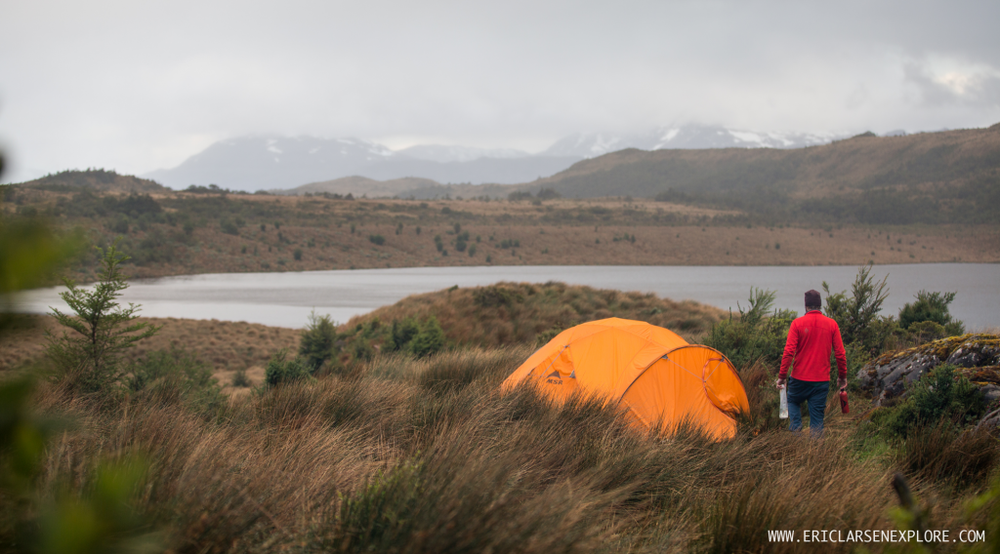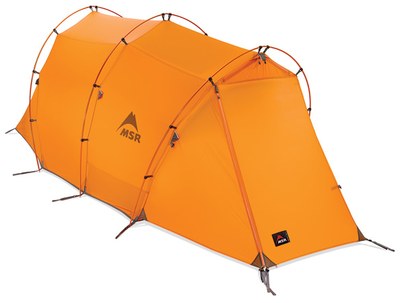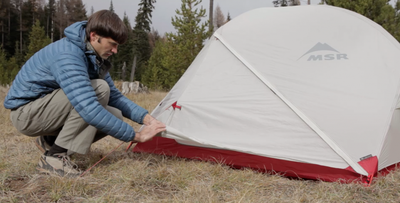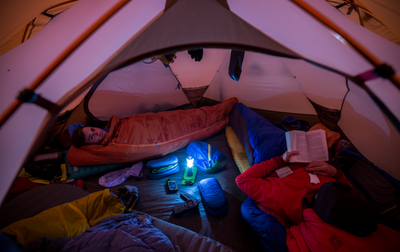
Terry Breaux is what you would call an expert camper. He fell in love with the outdoors as a kid the first night he slept in a tent under the stars. He continues to pursue bikepacking expeditions today, always testing gear and seeking ways to create better shelters for outdoor users. He's been designing tents since 1989, and for the last nine years he's worked at MSR. Now he's spreading his tent knowledge with you.
By MSR Tent Designer Terry Breaux. All photos courtesy of MSR.
What defines a single-wall versus a double-wall tent? Why the two construction designs? And which are the best uses for each? Let’s uncover the answers:
Single-wall tents

A single-wall tent is exactly what its name implies: A tent constructed of a single wall of fabric. Traditionally, single-walled tents used some sort of robust waterproof, breathable fabric and were almost exclusively used as mountaineering tents.
In an effort to produce ever-lighter tents for all types of users, some tent manufactures now use coated, nonbreathable fabrics on single-wall backpacking models.
Double-wall tents

Again, the answer is almost too obvious. A double wall tent is constructed of two walls—typically the tent body and a rainfly. As tents evolved from cotton to nylon ripstop fabrics, their designs began to incorporate 2 layers of fabric to achieve waterproofness and breathability. The rainfly is 100% waterproof but not breathable. The inner tent is 100% breathable but not waterproof. Combine the two and you get the benefits of both.
Pros and cons of single-wall tents
You purchase a single-wall tent for its simplicity of set up and the fact that it typically weighs less than a double-walled tent of its same category and size. Single-wall tents are easier and quicker to set up, which is especially crucial when trying to erect your tent in a blizzard or when having to dig out a ledge on the side of a mountain. The price for ease of set up and lighter weight is more condensation inside the tent and usually not as much protected gear storage.
Pros and cons of double-wall tents
With a double-wall tent you are almost always guaranteed to have a dry tent and more dry gear storage. Double-walled tents have multiple doors and vestibules to keep your gear dry. But again this comfort and space comes at the expense of an increase in weight compared to a comparable single-walled design (i.e. same size, same season rating).
Double-walled tents also require more staking and attention to guying out the rainfly. In addition to staking the tent body, the vestibules must be staked out securely. Also the tension on the rainfly may need to be adjusted after setup. Tent rainfly fabrics, particularly nylons, tend to stretch a little when damp or wet and require retensioning of the rainfly.
Best environments for each
Single-wall tents work best in alpine environments where it’s typically dry and cold. Double-wall models really shine when it is raining and humid and where extra gear storage is necessary.
Tips and tricks for use
Venting is key in single-wall tents to keeping condensation under control. In alpine situations, venting usually comes at the expense of warmth. You’ll want to try to find the right balance between a warm interior and controlling condensation.

With double-wall tents, make sure the floor is staked out tight and wrinkle-free. This ensures that the poles will be in the correct position to help keep the rainfly from touching the tent body. Stake the tent out wall and use guy cords—before you need them. Really, it is best to use guy cords as you set the tent up rather getting up in the middle of the night to attach them once a storm rolls in. Guy cords go a long way in keeping the tent stable and the rainfly fabric taut.
 Kristina Ciari Tursi
Kristina Ciari Tursi